Chapter 6.7: IT and the Internet
Li Yong, Deputy Secretary General, China Association of International Trade
IT industry
Telecommunications
China's telecommunications industry has experienced rapid growth in recent years . In the period of the ninth Five Year Plan, total telecommunications revenue increased at an average annual rate of 28.8 per cent, 3.2 times the GDP growth rate over the same period. However, the unit price went down across the board as a result of structural adjustment to the telecom tariff , and market competition became increasingly intense , triggering off price wars which led to a decline in the average revenue per user . The removal of the initial installation fee for fixed-line users and the network fee for mobile users also had an adverse impact on the rate of increase in total revenue. Despite these unfavourable changes, China's telecom industry still registered an increase of 25 per cent in 2001, with total traffic revenue of RMB361.2 billion, measured in 2000 unit prices. The total number of fixed-line users increased by 34.83 million to 179.03 million. There was a total of 59.55 million new mobile users in 2001, bringing the total to 144.81 million and making China the world's largest mobile communications market.
With the development of China's telecoms industry, demand for telecom facilities and telecom network equipment continues to grow. According to statistics from CCID Consulting, a corporatised research arm of the Ministry of Information Industry (MII), investment in fixed assets in 2001 was RMB277.95 billion, an increase of 25 per cent over 2000.
Reform of the telecom sector accelerated in 2001, driven largely by China's WTO accession . One historic event was the break-up of China Telecom, one of the few remaining monopolies. With the approval of the State Council, China Telecom has now been divided in two, one part of which retained the name China Telecom while the other became China Netcom.
In the next five years, the number of users of China's fixed-line and mobile phone network is expected to double, with the total number of subscribers reaching 500 million, while the national telephone penetration rate is expected to reach 40 per cent.
| Year | Total investment in fixed assets | Size of telecom equipment market | ||
|---|---|---|---|---|
| Value (RMB billion) | Growth (%) | Value (RMB billion) | Growth | |
| 1997 | 105.595 | 15.9 | 74.375 | 12.0 |
| 1998 | 150.074 | 42.1 | 107.4 | 44.4 |
| 1999 | 160.522 | 7.0 | 110 | 2.4 |
| 2000 | 222.381 | 38.5 | 145 | 31.8 |
| 2001 | 277.95 | 25.0 | 169.46 | 16.9 |
| Source: CCID Consulting | ||||
The PC market
Desktop PCs
The desktop PC market is typically demand driven because of the excess of desktop PCs on the market. In order to reduce the increasing inventory, manufacturers are making every effort to build a brand image in an attempt to gain consumer recognition and acceptance. Accompanying the brand-building effort, the battle for market share has also resulted in competitive price- cutting, which led to paper-thin profit margins. Industry participants have described competition in the desktop PC market in 2001 as 'unprecedented'.
Although competition in the desktop market was fierce, total sales value and volume have both registered impressive growth thanks to increasing consumer demand. According to CCID Consulting, total sales revenue from desktop increased by 12.3 per cent, while the number of desktops sold rose by 17.4 per cent (see Figure 6.7.1).
Source: CCID Consulting
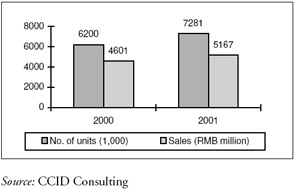
Figure 6.7.1: Desktop PC sales in 2000 and 2001
The characteristics of China's desktop PC market are:
-
Domestic brands have the advantage;
-
It is a dynamic market with significant potential, while at the same time being a very competitive battlefield;
-
Smaller brands are challenging traditional brands, while non-branded compatibles are making inroads into the branded market.
The market leader in 2001 was Legend, with 45.1 per cent of the desktop market. Competing brands such as Founder and TCL held 9.6 per cent and 8.5 per cent of the market respectively.
Of the total units sold in 2001, 2.89 million were home PCs, accounting for 39.7 per cent of the total desktop market. Industry experts warned that China's PC market faced tough challenges in 2002; the growth of the PC market is expected to have slowed down and an increase of 10 per cent, to reach 3.2 million units, is expected in 2002.
Laptop PCs
Because of the technological barriers, the laptop PC market is less crowded than the desktop market in terms of numbers of brands and players. However, price is still an important influence on the market pattern. With improvements in technology reducing the costs of manufacturing laptop computers, price competition became an effective means to gain market share. In the first half of 2001, a number of multinational IT giants such as Dell, Compaq, Toshiba, IBM and HP joined the price-cutting race, slashing prices by more than 10 per cent. Reasons for multinationals to join the competitive race include:
-
the advantages of scale economics in mass production;
-
closely calculated strategies based on the fast-growing potential of China's market;
-
the enhanced development strength that the multinational enterprises have;
-
anticipation of import tariff cuts following China's WTO accession that will lower the costs of laptop manufacturing across the board to the advantage of other laptop brands.
As a result of price competition, the best price for a laptop was RMB12,755, a significant reduction compared with RMB20,000 “30,000 two or three years ago. In 2001, laptop sales reached a new high of 596,000 units and sales revenue was RMB9.03 billion.
Legend led the laptop market with a share of 21 per cent, followed by IBM (14.3 per cent), Toshiba (14.3 per cent), Dell (12.2 per cent) and Acer (7.6 per cent). In fact, there are three competing forces on the ground. One leading force consists of international brands such as IBM, Dell, Toshiba, HP and Compaq, whose combined market share clearly predominates. Another force is represented by local brands such as Legend, Founder, Uinsplendour and Winbook, with Legend the leader. The third source of competition comes from Taiwanese manufacturers, such as Acer, Asus, Compower and Twinhead, with Acer winning the largest market share of this group (see Figure 6.7.2).
Source: CCID Consulting
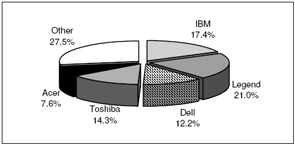
Figure 6.7.2: Market share of the key laptop brands 2001
The market for laptops has continued to grow in 2002 and total sales are expected to exceed 800,000 units, which will be an increase of 35 per cent on 2001.
The server market
Driven by the global trend towards digitalization , Chinese organizations and businesses have stepped up their networking efforts and as a result the demand for servers has risen.
IA servers
According to CCW Research, the total sales of IA servers in 2001 reached RMB667,900 million, with the total number of units being 203,700 which, according to a separate source ( Internet Weekly ), represented an approximate 40 per cent increase over 2000. Many server manufacturers adjusted their marketing strategies to address the increasing market demand. The competition had become intense. In general, domestic brands are fighting at the lower-end of the market while international brands are competing at the higher-end. According to research by CCID Consulting, servers priced at under RMB30,000 accounted for about 60 per cent of the market, but their total sales revenue was less than one-third of total market sales (see Figure 6.7.3).
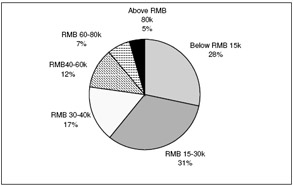
Figure 6.7.3: IA server market shares by sales value of key brands, 2001
In sales value terms, HP took a leading share of 22.7 per cent in the 2001 server market in China. IBM were in second place, capturing 18.6 per cent of total market sales. Two domestic leaders , Legend and Langchao, ranked third and fourth, followed by Dell in fifth (see Figure 6.7.4)

Figure 6.7.4: IA server market shares by sales value of key brands, 2001
It is predicted that the IA server market will maintain a growth of 20 per cent, to reach 245,000 units in 2002.
RISC servers
Sales of RISC servers in 2001 hit a total value of RMB684,000 million, an increase of 31.3 per cent on 2000. This section of the IT sector is dominated by international brands such as IBM, Sun, HP, Compaq and SGI, although domestic manufacturers have been trying to catch up. As Figure 6.7.5 shows, the combined share of the top three market leaders was 84.5 per cent.

Figure 6.7.5: RISC server market share by brand, 2001
The main markets for RISC servers are telecom enterprises, government organizations, financial institutions and large manufacturing enterprises. In 2001, these four categories of end-users accounted for 86.5 per cent of the total market. Growth for 2002 is projected to be around 25 per cent.
Computer peripherals
In 2001, the key computer peripheral products market experienced volume increases of varying degrees. The monitors market saw another year of intensified competition. There were nearly 100 monitor brands, producing about 45 million monitors in 2001, or 37 per cent of the world's total monitor output. The leading producers of monitors in China are Samsung, Philips and LG, whose combined share of the market was 63.5 per cent. However, their dominance was eroded by other smaller brands and new entrants in the first half of 2002 when AOC took second position by gaining 15 per cent of the monitor market in the first six months.
| 2000 | 2001 | Jan “June 2002 | |
|---|---|---|---|
| Samsung | 27.4% | 29.9% | 30% |
| Philips | 24.1% | 16.7% | 10% |
| LG | 11% | 16.9% | 13% |
| Total share | 62.5% | 63.5% | 53.% |
| Source: eNews | |||
While the CRT monitors market is engaged in a fierce battle, LCD monitors have been cultivating a growing market. Total sales of LCD monitors in 2001 were 170,000 units. Benq led the other brands by capturing a market share of 20.5 per cent. The second to fifth positions were taken by Samsung, Philips, LG and EMC and the total market share of the top five brands was 77.9 per cent.
The performance of the printers market was relatively stable and competition was less volatile. In the laser printer category, HP dominated the market with 56.9 per cent. The competing laser printer brands were Legend, Canon, Epson and Founder. Total laser printer sales in 2001 were 735,000 units with a value of RMB3.05 billion. The inkjet printer market is quite concentrated and competition in 2001 was essentially restricted to the leading brands. Epson had a 30.3 per cent share of the market in 2001, but was under threat from Canon's 27.2 per cent market share. Close behind were Legend and HP, whose market share in 2001 were 16.7 per cent and 14.9 per cent respectively. Lexmark took fifth position with a share of 8.5 per cent. The combined share of the five largest brands in China's inkjet printers market in 2001 was 97.6 per cent and total sales amounted to 2.1 million units.
The performance of other computer peripherals in 2001 varied in terms of sales revenue and volume. Scanners and CD writers saw impressive increases in sales volume, although sales value had negative growth. Data projectors registered an increase of 40 per cent in volume terms, while disk memory systems grew at 111.4 per cent and network memory systems developed at explosive speed.
While the computer peripherals market in 2001 operated under the shadow of price competition, it still achieved total sales of RMB439 billion, an increase of 8.4 per cent over 2000.
Software market
Despite growing evidence that the US IT market slowdown was having a global impact, the software market in China has been growing steadily in value terms (RMB183 billion in 2001), although the rate of growth slowed down.
| Year | 1999 | 2000 | 2001 |
|---|---|---|---|
| Software sales (RMB billion) | 17.6 | 23.0 | 28.5 |
| Rate of growth (%) | 27.5 | 30.7 | 23.9 |
| Source: CCID Consulting | |||
In terms of software growth by category, platform software lost 2 percentage points of its share in the total software market in 2001, as a result of the slowdown in the growth of the hardware manufacturing sector. Intermediary software, largely used in network applications, gained 1.7 percentage points over 2000 in its share of the total software market. This gain was largely attributed to the rapid development of the internet in China. The rate of increase in the sales of intermediary software reached a phenomenal 59.6 per cent. Applications software maintained its growth trend in 2001 by recording a gain of 0.7 percentage point in total software market share. Its growth has been steady over the past few years and in 2001 sales of applications software increased by 25 per cent.
| Type of software | Sales (RMB billion) | Growth (%) |
|---|---|---|
| Platform software | 85.9 | 16.4 |
| Intermediary software | 15.8 | 59.6 |
| Applications software | 183.3 | 25.3 |
| Total | 285 | 23.9 |
| Source: CCID Consulting. | ||
China's share of the world software market is about 1.2 per cent. The government has undertaken to increase this to 3 per cent by 2005. To achieve this, the country will focus its efforts on basic software and critical technologies, software for business management, social services and e-commerce and educational and home- use software. The software industry in China is generally fragmented and software development is dispersed among small software companies. China currently has over 10,000 businesses and 400,000 people engaged in software development and related services. There are another 1,023 higher education institutions in China with computer or software departments, recruiting a total of 586,000 students.
In response to the need to develop China into a major software country, the tenth Five Year Plan of 2001 “2005 provides for a growth target for the software industry of more than 30 per cent annually. The government will continue to create a favourable environment for software industry development in an effort to achieve so-called 'hop-skip-and-jump' growth. Among various preferential policies, the most important is the Notice of Certain Policies to Promote the Software and Integrated Circuit Industry, promulgated by the State Council in June 2000. The Notice, clearly recognising the importance of these two industries in the development of China's information technology sector, sets out preferential policies such as VAT refunds to be used for R&D and expanded production by software enterprises, preferential income tax relief and fast-track approval for overseas IPOs of software companies.
However, alongside policies encouraging the development of the software industry, there are challenges. The main ones include low domestic market share, shortage of capital availability, fragmentation characterized by small and non-competitive enterprises, lack of innovative ability, and insufficient protection of intellectual property rights. In another step to boost the development of China's software market, the government has geared up its efforts to crack down on software piracy.
IT services
Competition between hardware and software has become increasingly turbulent, and profit margins are becoming more and more squeezed. IT services has become a new leverage of market profit (see Figure 6.7.6). According to CCID Consulting, China's IT service market in 2001 was worth RMB40.16 billion.
Source: CCID Consulting
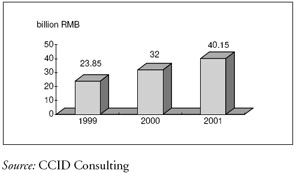
Figure 6.7.6: Growth of the IT services market 1999 “2001
In 2001, the markets of hardware support and maintenance, professional services and network services were valued at RMB9.07 billion, RMB21.102 billion and RMB6.995 billion respectively. Their shares in the total IT service market are shown in Figure 6.7.7.

Figure 6.7.7: Market share by IT services category, 2001
Professional services captured the largest share of the IT services market. Systems integration was the main element of professional services, accounting for 83.4 per cent of the total professional services market. The demand for systems integration has increased over recent years (see Figure 6.7.8).
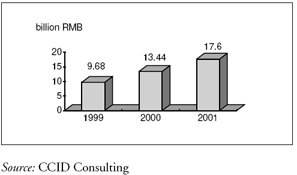
Figure 6.7.8: Growth of the system integration market
According to projections by CCID Consulting, the size of China's IT services market is expected to rise in 2002 by 25.4 per cent to RMB50.4 billion. By 2006, the IT service market will be worth RMB 136.2 billion, with annual average growth at 27.7 per cent.
EAN: 2147483647
Pages: 648